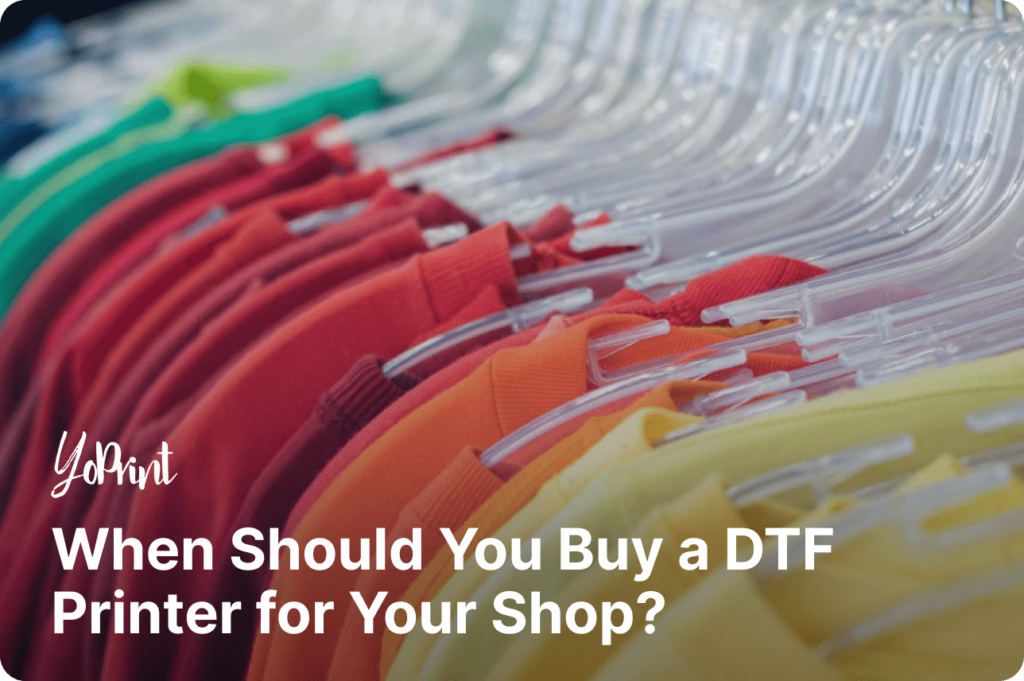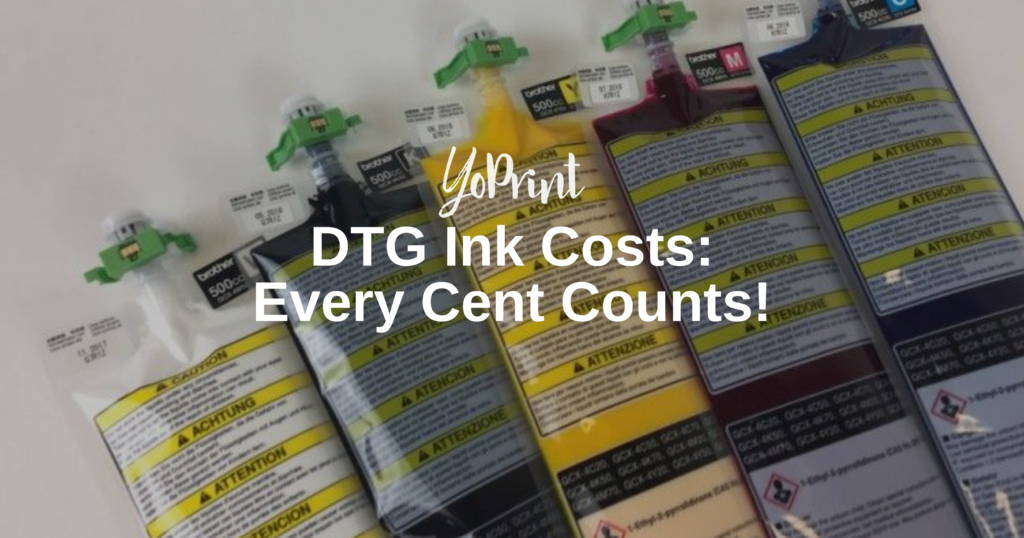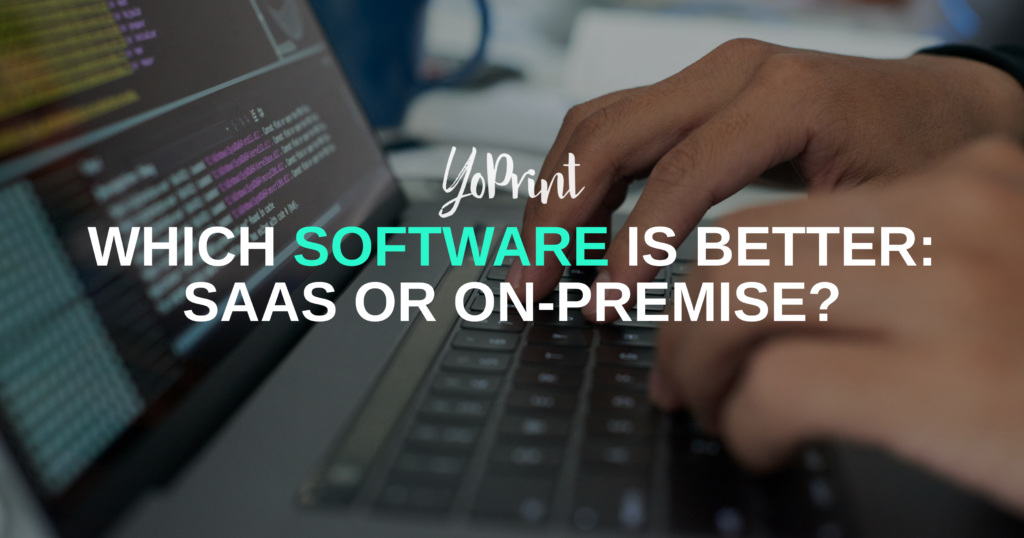Custom garment printing has become a lucrative venture over the years, especially as the demand for fast fashion increases and new printing technologies make it much easier to print custom T-shirts and the like. The direct-to-garment (DTG) market is predicted to reach a staggering USD 822.1 million in 2022. With the accessibility of entry-level printers and online tutorials that allow regular people to start their print shop from home, it’s any wonder why the industry is booming.
The relatively recent introduction of direct-to-film (DTF) printers has also helped contribute to the surging growth of the digital printing industry. It affords fast printing speeds, excellent print quality, impressive substrate versatility, and lasting durability that puts it on par with the other printing methods available today. Given how fashion is a constantly evolving industry, it would make sense if, as a print shop owner, you opened yourself to the possibilities of introducing a new printing method, like DTF printing, to your lineup.
Easy though it may seem, you can’t just buy a few DTF printers, start selling them, and then expect to make a quick profit. You’ll need to consider essential considerations, mainly whether you should introduce it as a new in-house service or outsource it to a contract printer specializing in DTF printing. Which of these makes sense in your shop’s current responsibilities and specializations?
When to Consider In-house Printing
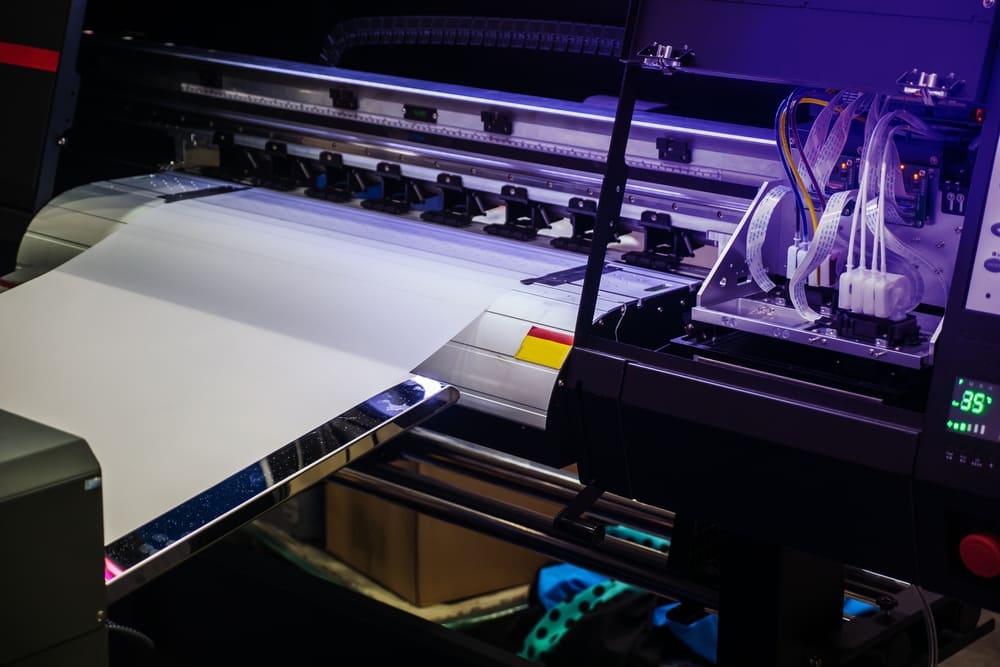
Simply put, in-house printing is what you’re currently doing: you acquire the necessary equipment and materials to fulfill garment orders that you receive directly from customers. If you’re an in-house screen printer, your shop is fully equipped for all kinds of screen printing orders your customers may want – screen printing presses, squeegees, mesh screens, and so forth.
Keeping your printing in-house has its fair share of pros and cons, depending on the nature of your print shop and the kind of printing services you provide.
Direct customer contact: Whether you’re discussing with your clients from your physical storefront or via online means, direct communication (with your personal touch for each customer) offers you and your customers a mutually beneficial arrangement: you provide them with valuable services and great customer service, and in return, your customers will – both directly and indirectly – draw potential clients to your business, allowing you to grow and offer better printing services.
Convenience: Instead of relying on another print shop, you can immediately start a new customer order and have it ready before the agreed deadline. No delays and no need for back-and-forth calls over details of the customer’s request; once you receive the order, your staff can begin at a moment’s notice.
Complete control of production: You have full control over every order you receive, from the materials you use and how the order will be priced based on what was used. It also means you’ll be able to acquire the needed materials at better prices, keeping your overheads reasonably low while still delivering quality that your customers will love.
Balancing overall costs: While the benefits are enticing, are they worth the additional equipment and materials investment in the long term? After all, you can’t just buy these willy-nilly; if you don’t get a single order for that newly introduced printing method, your investment will only have gone down the drain.
Time constraints: Even if you have interested customers, can you reliably meet their orders on top of your existing ones? If you don’t have the means to keep up with the orders you’re receiving, you’ll fail to meet deadlines and significantly hamper your credibility with your customers.
Why Outsource Print Jobs?

With outsourcing, you’re allowing another print shop to help you with certain services that your shop lacks. A screen printing shop might ask another shop to help add embroidery for a particular order. In most cases, a print shop may arrange with a contract printer for specific services. This mutually beneficial arrangement is how print shops help one another meet their client’s requests.
Focus on your core niche: One reason why print shops don’t consider adding another printing method is so they can focus on the core services that they consistently provide. They form their shop around specialization on a single printing method, honing their craft and allowing them to provide their customers with the best services they can offer. For example, some screen printers only take on screen printing orders but offer halftone and even simulated process printing, among others.
Cost-effectiveness: Since you can enlist the help of another print shop for services you lack, you won’t need to worry about investing in or leasing the necessary equipment or sinking time into learning the ropes of a new printing method. As such, you can divert your budget to your core niche, keep your overheads low, and adjust your prices based on the agreed-upon printing arrangements with the outsourced print provider (and the quality produced).
Availability: While you can make advance orders with the outsourced print provider, there may be occasions when a print shop is unavailable due to various circumstances. If the shop you regularly contract might be busy with other commitments and is the only one in your area that provides the service you need, you’ll have to look elsewhere quickly. It could mean you may need to pay more or wait longer for the order to be completed.
Not for small-scale printing: Most contract printers usually have a minimum number of items per order before they take on an outsourced job. They’ll price their services accordingly and offer lower prices as the order size increases. As such, it might be rather costly to place small-scale orders – assuming they won’t accept the order in the first place.
When to Pick In-house or Outsourced Printing
Knowing whether to go with in-house printing or outsourcing depends on many factors. Your first concern would be determining if the investment for DTF printing equipment and consumables will be profitable in the long term. Even if there’s a demand for DTF printed goods, you still need to consider the time and labor considerations to meet your deadlines promptly – that will be up to you on how you’ll achieve this.
Your first concern should be the potential return on investment (ROI) if you invest in DTF printing. Let’s consider the following example as a baseline for your overall considerations on DTF printing.
For a successful print shop, it would be wise to invest in a good mid-range DTF printer that can produce quality DTF prints quickly. One such option is the STS VJ-628D DTF printer; you can get a complete package that includes consumables and raster image processing (RIP) software for under $10,000. It can print out multiple designs on a single roll, allowing you to apply the printed films onto numerous garments.
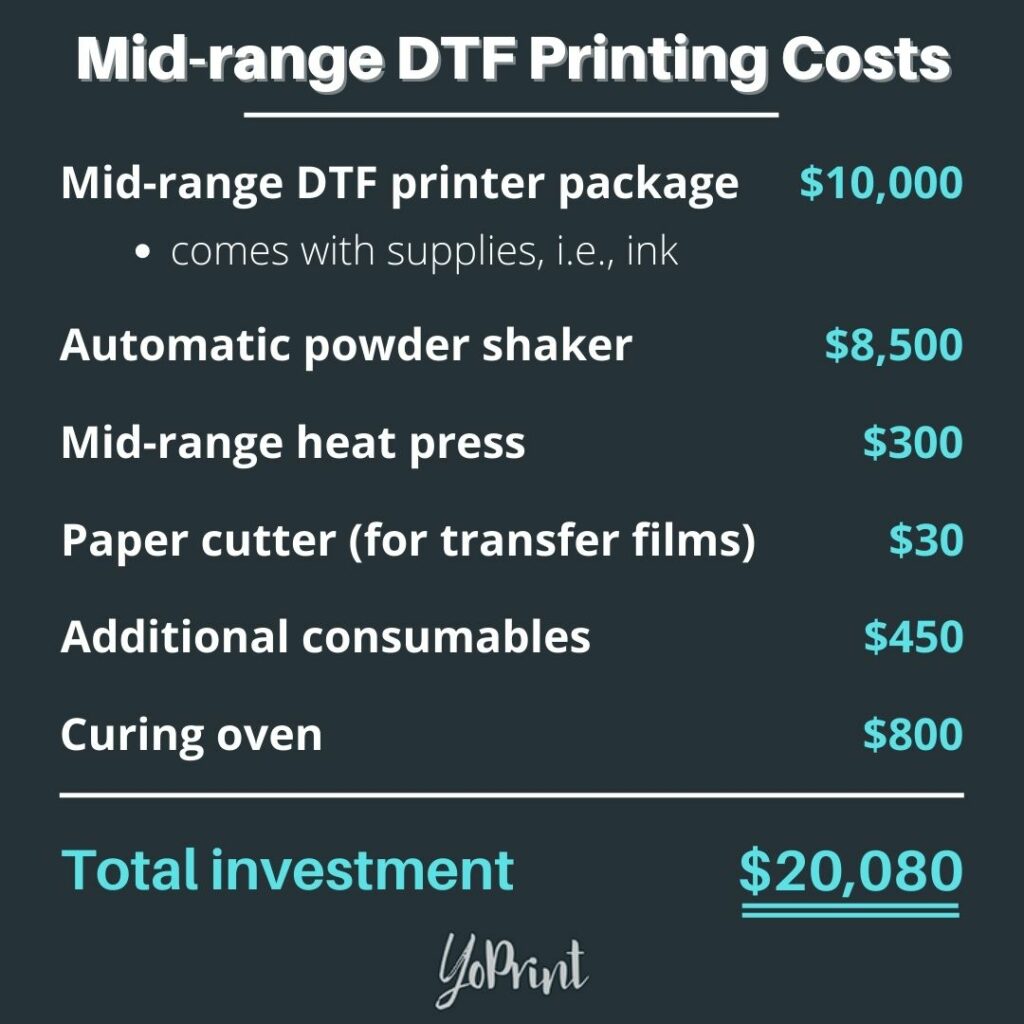
With additional equipment and consumables to spare, you’re looking at an investment of around $20,000. Once you start printing, you might structure your pricing per garment in the following manner (see below).
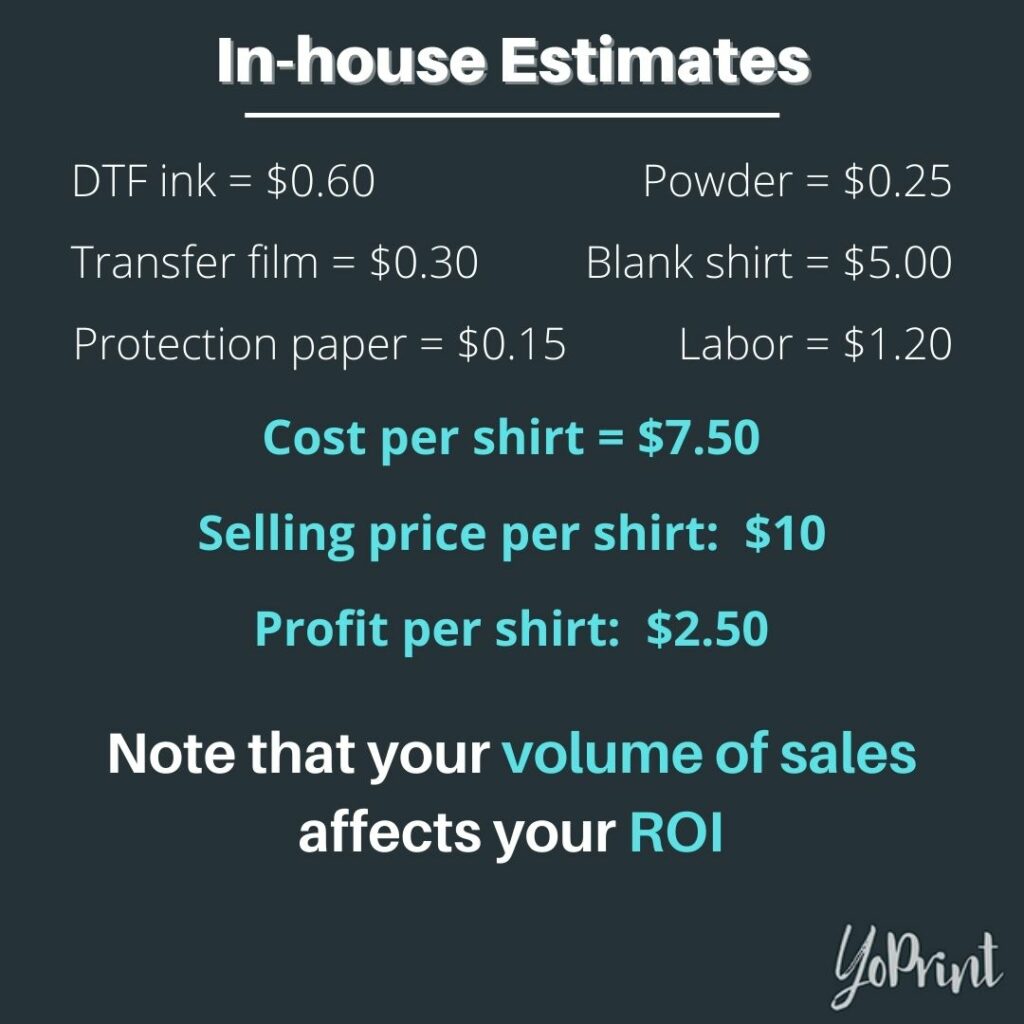
The vital point to remember is that your sales volume will affect how long it takes to achieve your ROI. In the context of the above examples, you’d aim to sell at least 8,000 garments at a profit of $2.50 per garment to reach your ROI. Thus, if you only sell 100 garments per month, your investment will take at least 80 months to break even. The more garments you can sell, the faster you’ll achieve your ROI.
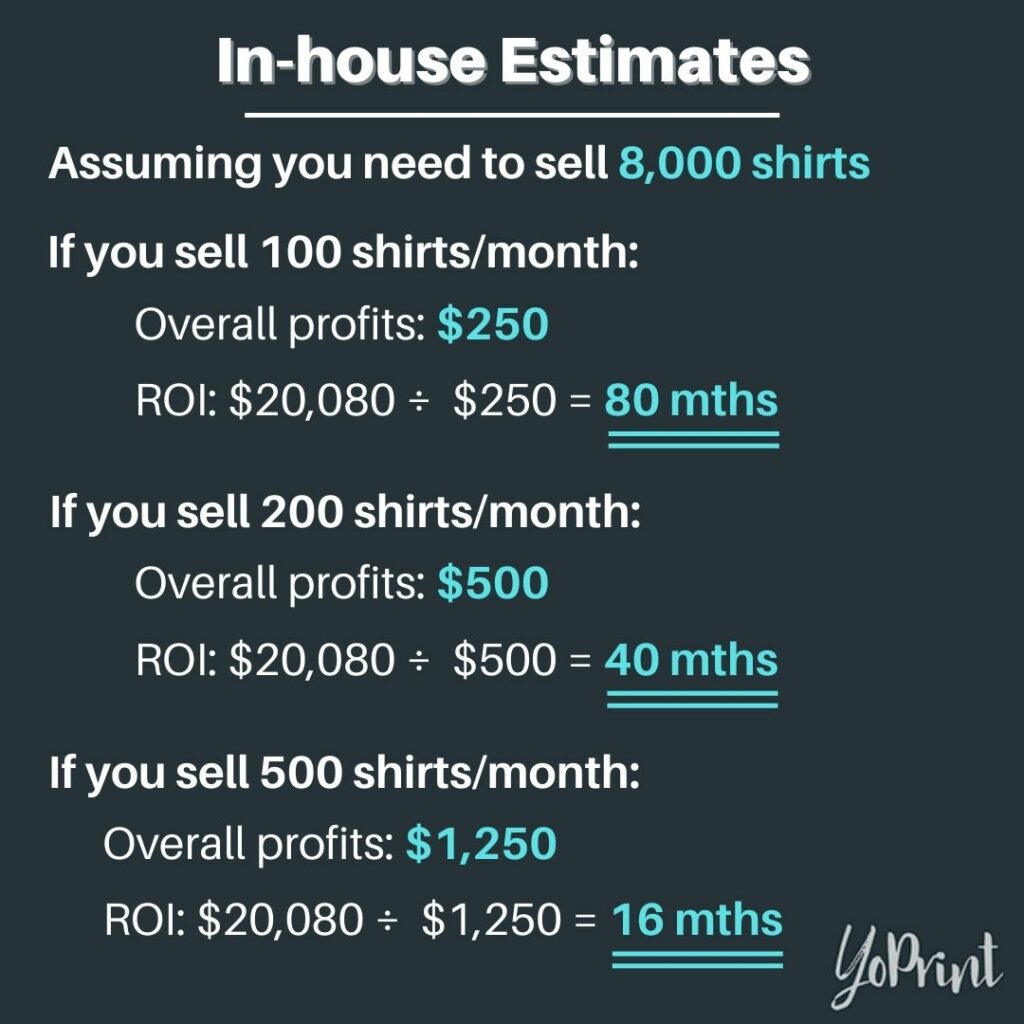
Where outsourcing is concerned, your most significant advantage is that you won’t need to spend so much to procure the necessary equipment and consumables. You’ll be delegating all the work to a shop that can do it for you and only have to pay for their workmanship at their preset prices (or based on whatever arrangements you’ve made with them). Consider the following sample pricing structure for some context.
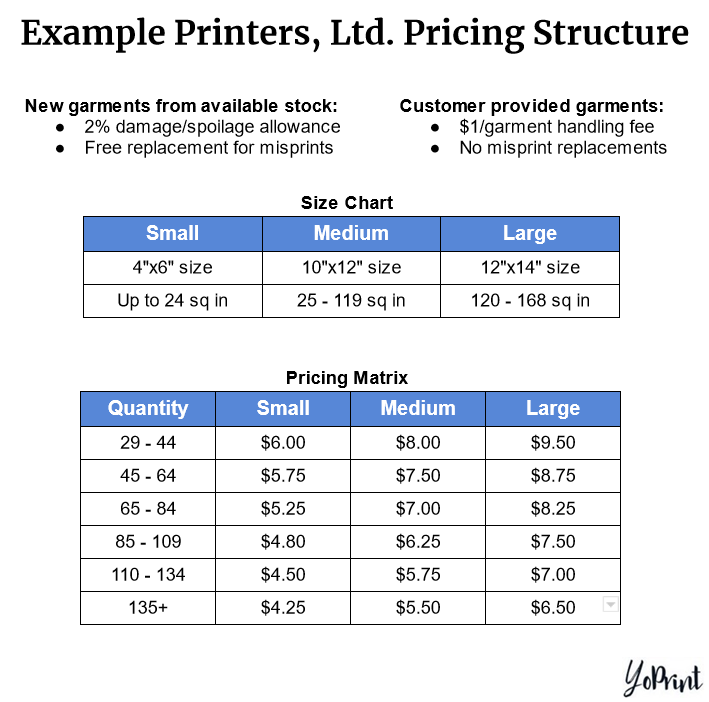
As you can see, the more garments you need to be printed, the lower the overall cost you’ll need to pay. For an order of 100 garments with a small design, that would be $4.80 per piece, totaling $480. Meanwhile, an order of 200 garments would only cost $4.25 per piece, totaling $850. If the price were fixed at $4.80 per piece, that’s $960 for 200 garments; you’re saving a modest sum of $110. It might not immediately become apparent, but your long-term savings are additive over time.
The profitability from outsourcing will also depend on how you price your garments and the volume of orders you receive. Consider the following example.
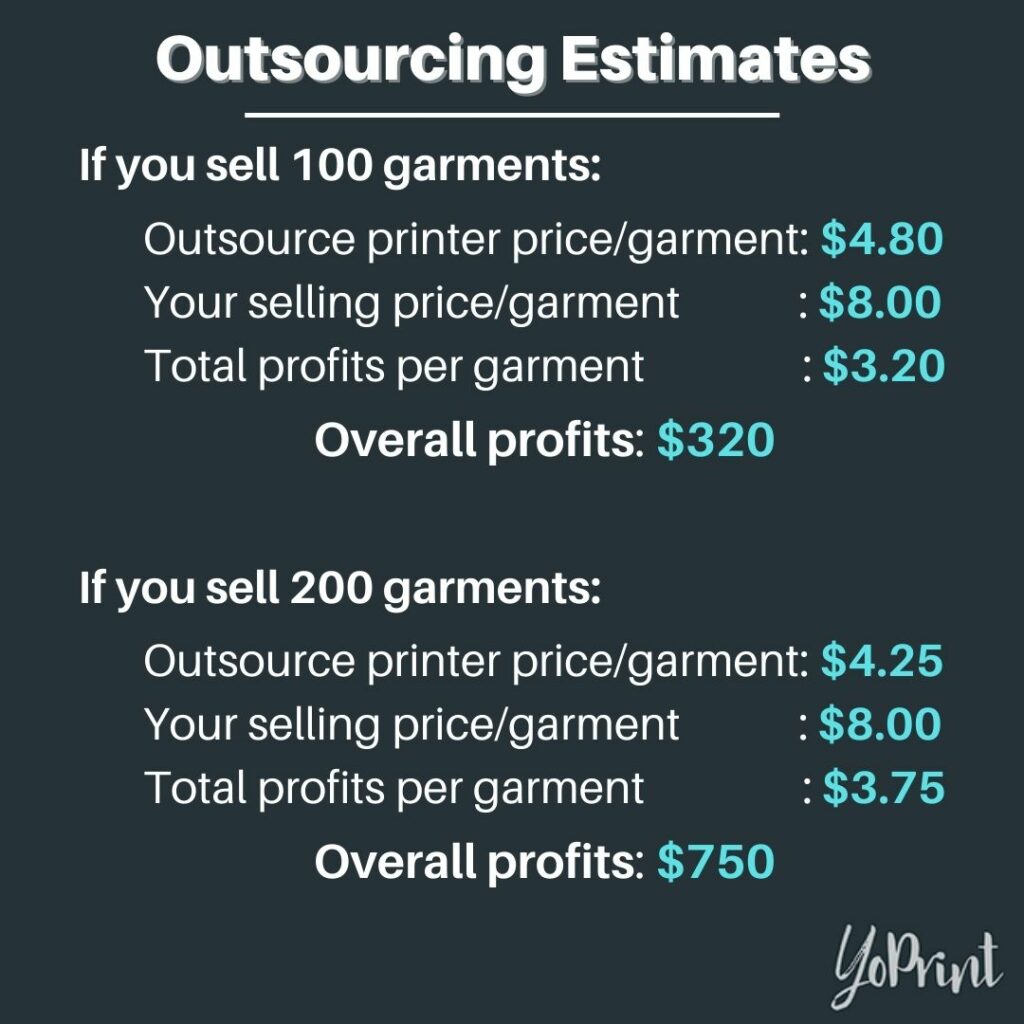
As you can see, the more garments you can sell at a higher price, the higher your overall profits per order. Consider outsourcing for substantial orders where you can maximize your profit margin and recoup the initial cost to outsource. In time, you can secure preferential pricing with regular print shops you seek out for outsourced jobs, further improving your overall gains.
To summarize, printing in-house is your best option if there’s a manageable customer demand for DTF products. Complete control of your production and overheads gives you an extra edge in leveraging your setup and profit margin. If you have a great demand for DTF printed products but are keener on focusing on your core services, outsourcing is a sensible option.
Scenario 1: Screen Printing Shops
Successful screen printing shops constantly print hundreds of garments for high-volume orders. Efficiency and speed are key components to producing great-looking garments, especially for well-equipped shops with highly trained staff and the best equipment. Such a business can receive many orders with at least 200 pieces – if not more – in a single day and be able to meet them in a few days or weeks.

Amidst all the hustle and bustle of meeting your screen printing quotas, can you reliably add another printing method to your business? You’ll have to determine if your customers might also want non-garment items to be prepared, which your shop isn’t equipped for in the first place. As such, it would make sense to outsource any DTF-related orders while you prioritize your screen printing orders instead.
It might be rather tempting to add DTF printing to your shop, owing to the possibilities it might open up. Realistically, it isn’t worth spending a significant sum on the equipment and materials, especially when you’re not receiving many orders. We haven’t even included the additional expenses on labor or overheads to operate the DTF printing line. Given the minor benefits of adding DTF to your available services, it might be more obvious to use your budget to improve your screen printing capabilities instead.
For what it’s worth, you may even consider opening your shop to take on outsourcing jobs from other print shops that need screen printing jobs done. Taking advantage of your core niche would provide better prospects for your shop’s steady growth.
Scenario 2: Small-Scale Custom Printers
For small print shops that cater to small garment orders, adding DTF printing to your repertoire might be a good idea. Your core focus mainly focuses on printing unique, custom-made items for parties, family gatherings, and so on; you’re also not limited to printing on garments. The most common printing method for this type of small-scale printing is heat transfer vinyl (HTV) since it’s relatively easy to start with. It would be wise to consider starting with an entry-level in-house setup and expanding as your profits increase.
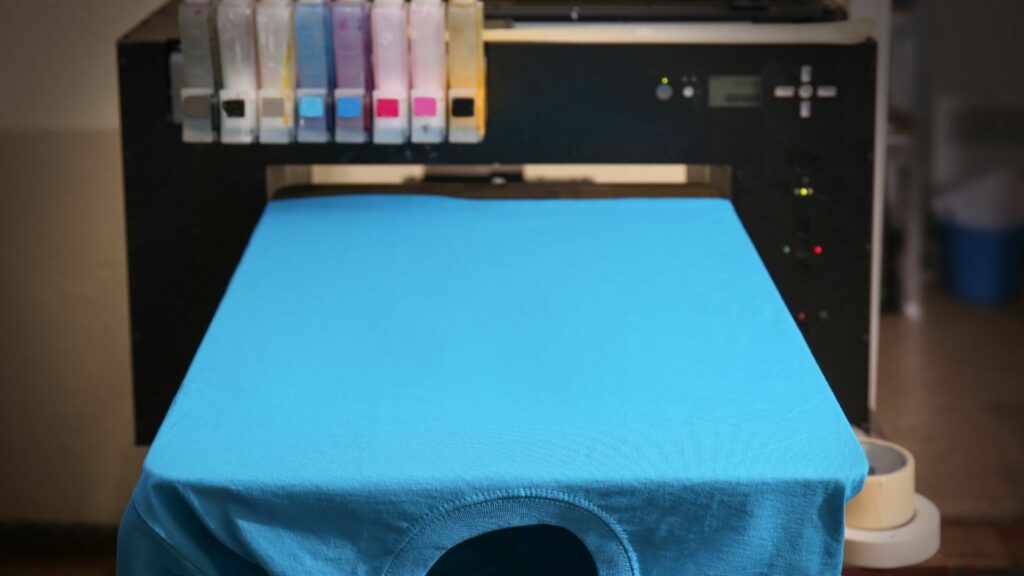
For HTV printers, DTF printing is a great solution to complement your shop. Since both use similar heat transfer methods, you won’t need to replace your existing equipment. You can add the DTF printer and consumables to start. DTF printing affords a similar level of quality as HTV, minus the need for weeding printed designs. If you’re so inclined, you can consider shifting your printing from HTV to DTF instead, as DTF printing offers longer-lasting durability than HTV.
You won’t need to immediately invest in a mid-range DTF printer, especially with the small-scale printing you’re catering to. Entry-level DTF printing still offers decent quality for garment and non-garment applications – and you won’t need to start with a converted printer. Given that it’s nowhere as time-consuming as weeding printed vinyl designs, DTF may be a more time-efficient option in the long run. This is especially important if you’re thinking of growing your printing business.
If you’re operating with DTG printing instead, you could provide non-garment printing options to your customers. With the ability to create unique garments and even special gift items, you’d add extra value to your services by offering new ones that would garner new customers.
Scenario 3: Non-garment Printers
Sign makers and non-garment printers can also consider leveraging DTF printing to add new value to their business. Owing to how new it is for your shop, your best bet is to start small and invest in entry-level equipment. This affords you a quick and easy way to start custom apparel printing. While outsourcing might be a good idea, only a few outsourced print providers may take up small orders owing to their printing arrangements for speedy bulk printing.
It shouldn’t be a problem to start small at first. DTF printing is relatively easy to learn thanks to its straightforward printing process, and in some regards, it shares similarities with the printing you handle daily. For example, mug printing uses heat transfer to print a design onto its surface permanently.
You can also use DTF printing to supplement your current non-garment printing needs, offering multicolored, complex designs at a more affordable rate. You can even provide printed films as standalone sales items, allowing customers to apply these transfers to whatever they like on their own. The sheer versatility DTF printing affords you isn’t restricted to these ideas; you might come up with something else to draw a crowd.
Conclusion
Leveraging the advantages of DTF printing can add extra value to your print shop’s services. Still, you’ll need to carefully weigh the pros and cons of doing it in-house or outsourcing it to someone else based on the expected demand for DTF printed goods. Outsourcing is a good choice when you’ve high demand for DTF printed goods but want to continue committing to your core niche. If the demand is within reasonable means, and you’d like to control how you produce your DTF goods, in-house printing is an initially costly – but worthwhile – investment to opt for.
Making a shift to add a new printing method isn’t just for the sake of improving your profitability. Adapting to new changes in the garment printing industry helps you stay ahead of the curve and allow your business to expand its customer base and services. Make sure you plan well ahead before you take any significant steps forward.
